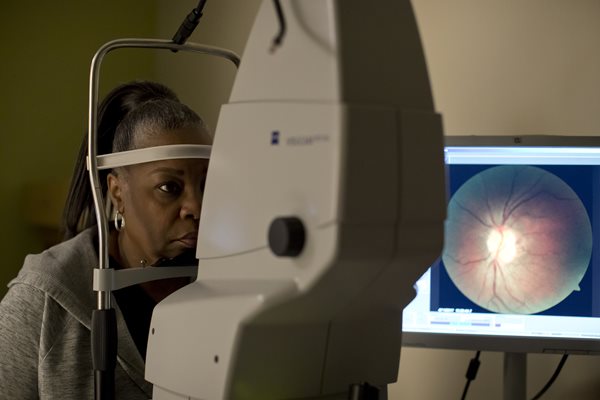Diabetic Eye Disease Awareness Month
Diabetes is a disease that affects the body’s ability to produce or use insulin effectively to control blood sugar (glucose) levels. Too much glucose in the blood for a long time can cause damage in many parts of the body. Diabetes can damage the heart, kidneys and blood vessels. It damages small blood vessels in the eye as well.
Statistics from the American Academy of Ophthalmology report that approximately 29 million Americans 20 years of age and older have diabetes, but nearly one-third don’t know they have the disease which puts them at a higher risk for vision loss and other health problems. Often symptoms go unnoticed and don’t begin to affect a person’s vision until the disease has progressed and is less easily treated.

Diabetic eye disease is a term for several eye problems that can all result from diabetes. Diabetic eye disease includes:
- Diabetic Retinopathy
- Diabetic Macular Edema
- Cataracts
- Glaucoma
Diabetic retinopathy
Diabetic retinopathy is when blood vessels in the retina swell, leak or close off completely. Abnormal new blood vessels can also grow on the surface of the retina.
People who have diabetes or poor blood sugar control are at risk for diabetic retinopathy. Risk also increases the longer someone has diabetes.
Diabetic macular edema
Macular edema happens when fluid builds up on the retina and causes swelling and blurry vision. Diabetes can cause macular edema. Diabetic macular edema can lead to permanent vision loss.
Diabetes and cataracts
Excess blood sugar from diabetes can causes cataracts. You may need cataract surgery to remove lenses that are clouded by the effects of diabetes. Maintaining good control of your blood sugar helps prevent permanent clouding of the lens and surgery.
Diabetes and glaucoma
Glaucoma is a group of diseases that cause damage to your eye's optic nerve. This damage leads to irreversible loss of vision. Having diabetes doubles your chance of getting glaucoma.
Diabetic eye disease can be progressive. You may not notice changes in your vision as they happen slowly over time. However, some early warning signs include: blurry or fluctuating vision, double vision, wavy or distorted vision, missing blank spots, floaters, or pain and pressure in the eyes.
According to the Centers for Disease Control and Prevention (CDC), about 90% of vision loss from diabetes can be prevented. Early detection is key. People with diabetes should get critical, annual eye exams even before they have signs of vision loss. Studies show that 60% percent of diabetics are not getting the exams their doctors recommend.
Scheduling an annual comprehensive eye exam is an excellent first line of defense against diabetic eye disease but you should contact your eye doctor sooner if you notice any visual changes. Call 215.276.6111 or click here to schedule an appointment at The Eye Institute.
You can also help lower your risk of diabetes or delay its progression with some healthy lifestyle choices.
- Eat a healthy diet with less sugar, processed, and junk food and more fruits, vegetables, whole grains, and lean meats.
- Watch your portion sizes. Eating too much food in one sitting has been shown to cause higher blood sugar and insulin levels in people at risk of diabetes.
- Exercise routinely and maintain a healthy body weight. Find a physical activity that you enjoy and stick to it.
- Avoid smoking. Smoking was found to increase the risk of diabetes by 44% in average smokers and 61% in people who smoked more than 20 cigarettes daily.
- Drink more water and less soda, juice, and sweetened beverages.
- Be compliant with medications.
- See your primary care physician (PCP) regularly. Your PCP can conduct regular screenings and help monitor for any changes that increase your risk for diabetes.
Changing your lifestyle can be challenging, but we encourage you to take charge of your health.